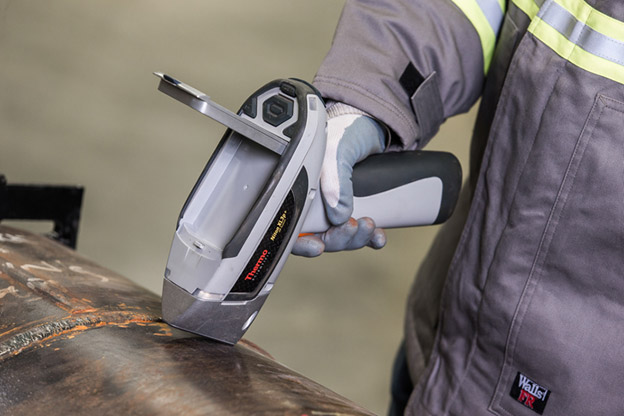BITS.PVT.LTD
HEAT TREATMENT SERVICES:
A.PRE-HEATING (RESISTANCE OR INDUCTION COIL METHOD):
An induction heating system consists of an induction power supply for converting line power to an alternating current and delivering it to a workhead, and a work coil for generating an electromagnetic field within the coil. The work piece is positioned in the coil such that this field induces a current in the work piece, which in turn produces heat.
The water-cooled coil is positioned around or bordering the work piece. It does not contact the work piece, and the heat is only produced by the induced current transmitted through the work piece. The material used to make the work piece can be a metal such as copper, aluminum, steel, or brass. It can also be a semiconductor such as graphite, carbon or silicon carbide.
BITS.PVT.LTD
POSITIVE MATERIAL IDENTIFICATION (PMI)::
The instruments based on the principle of ultrasonic measurement. It can measure thickness of material which allows the ultrasonic wave penetrating with constant speed and reflecting from the back side. With used in many areas of industry, ETC-098 has precise measurement petroleum, metallurgy, shipbuilding, aviation, space fight and so on. It can measure on various type of raw material and component parts. Applicable to monitor pipe and pressure vessel.
Performance is the most important features of our ultrasonic thickness gauges whether its coated bare metal, heavily corroded or clean UTG with drone is proven to be reliable simple and robust.



